Capturing the World of the Kandi Kids
Credit to Author: Aline Aronsky| Date: Tue, 10 Dec 2019 20:12:14 +0000
When I received my first piece of Kandi in 2016, my head was spinning from the loud music and the swirls of kaleidoscopic color around me. I looked down at my wrist, now wreathed by a rainbow bracelet made of plastic art beads. The girl who had given it to me had already melted back into the technicolor mass of dancing bodies and heavy bass. I was bewildered, wondering why a stranger would go out of her way to give me such a bizarre gift.
I eventually learned she was a Kandi Kid, part of a subculture of California’s most devoted ravers. Originating in Los Angeles in the early 1990s, the group of eternally young, EDM-obsessed ravers—mainly teenagers and young adults—populate the underground free party scene along the West Coast.
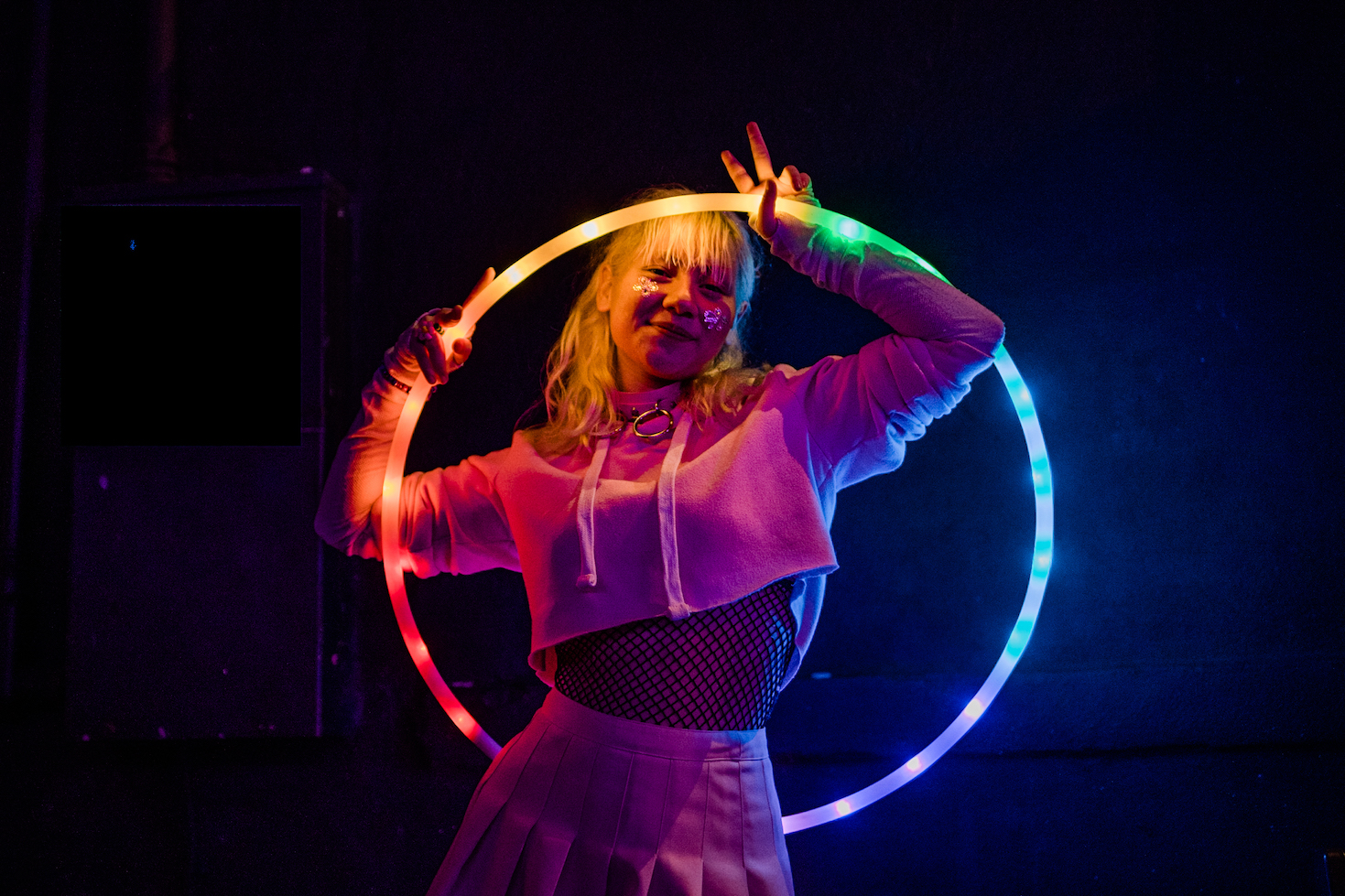
Raves are still filled with the iconic details they’ve become known for: pill cocktails, loud beats, and sweaty dancing. These days, though, Kandi Kids have taken on the responsibility of keeping their community as safe as sober ravers, a mantle that has evolved out of necessity, working to prevent harm. It's a testament to how nightlife culture has shifted since the federal RAVE Act was signed into law in 2003. Under the Act, business owners can be prosecuted if they run “drug involved premises,” which essentially has caused venues to ban anything that could possibly be affiliated with drug use, including harm-reducing measures.
Thus, enter the Kandi Kids.
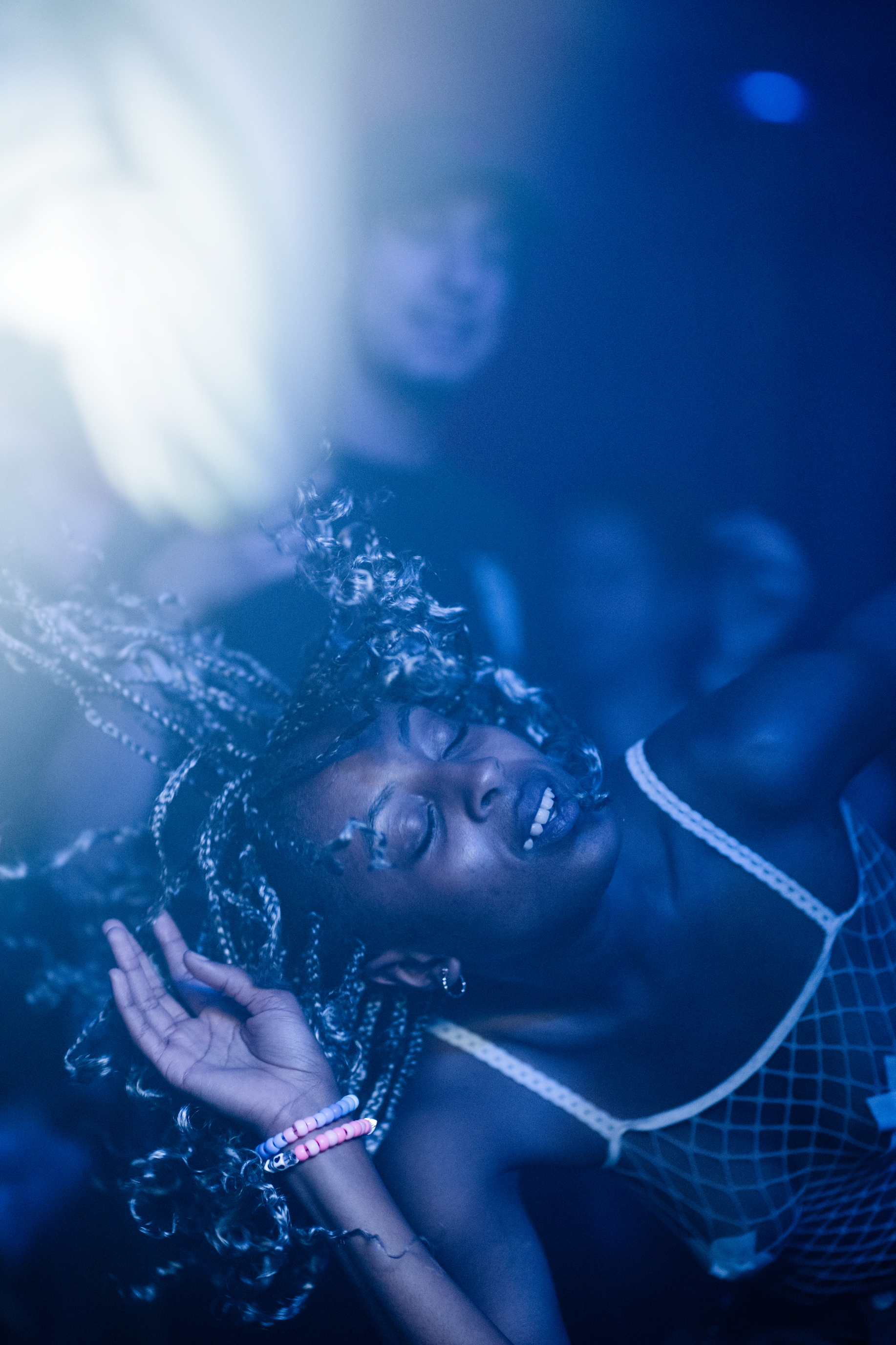
Their main mission is PLUR (or, peace, love, unity and respect). Kandi bracelets are exchanged between people who have developed a mutual connection, following a ritualized handshake. They are also given to newbies as a welcome. I was told by one Kandi Kid, who called himself ‘Mr. Calico’ that “the trade is a gift, but also a representation of recognition. It’s a way of saying, 'I see you, you exist, you have been acknowledged and your presence has been accepted.'”
The Kandi community is a whirlwind of colorful outfits, LED toys, escapism, and ecstasy. From an outsider’s perspective their colorful outfits seem childish, but I soon learned that this was exactly the point. While MDMA and other drugs are still a big part of raving, Kandi now symbolizes a presence against harm, anger and violence. Kandi Kids often go out of their way to make sure strangers are safe, handing out water and making sure everyone keeps cool.
“I often break away from the intensity of the stages and scan through the faces in the crowd,” Mr. Calico told me. “I notice people who can’t handle the extremes, and people that aren’t being cared for. When I see them, it takes such little effort on my part to walk over, initiate a PLUR gift to them, and assess if they’re healthy. Most of the time they are completely fine. I give them some water, and they walk away with a story of how some wild Kandi Kid approached them.”
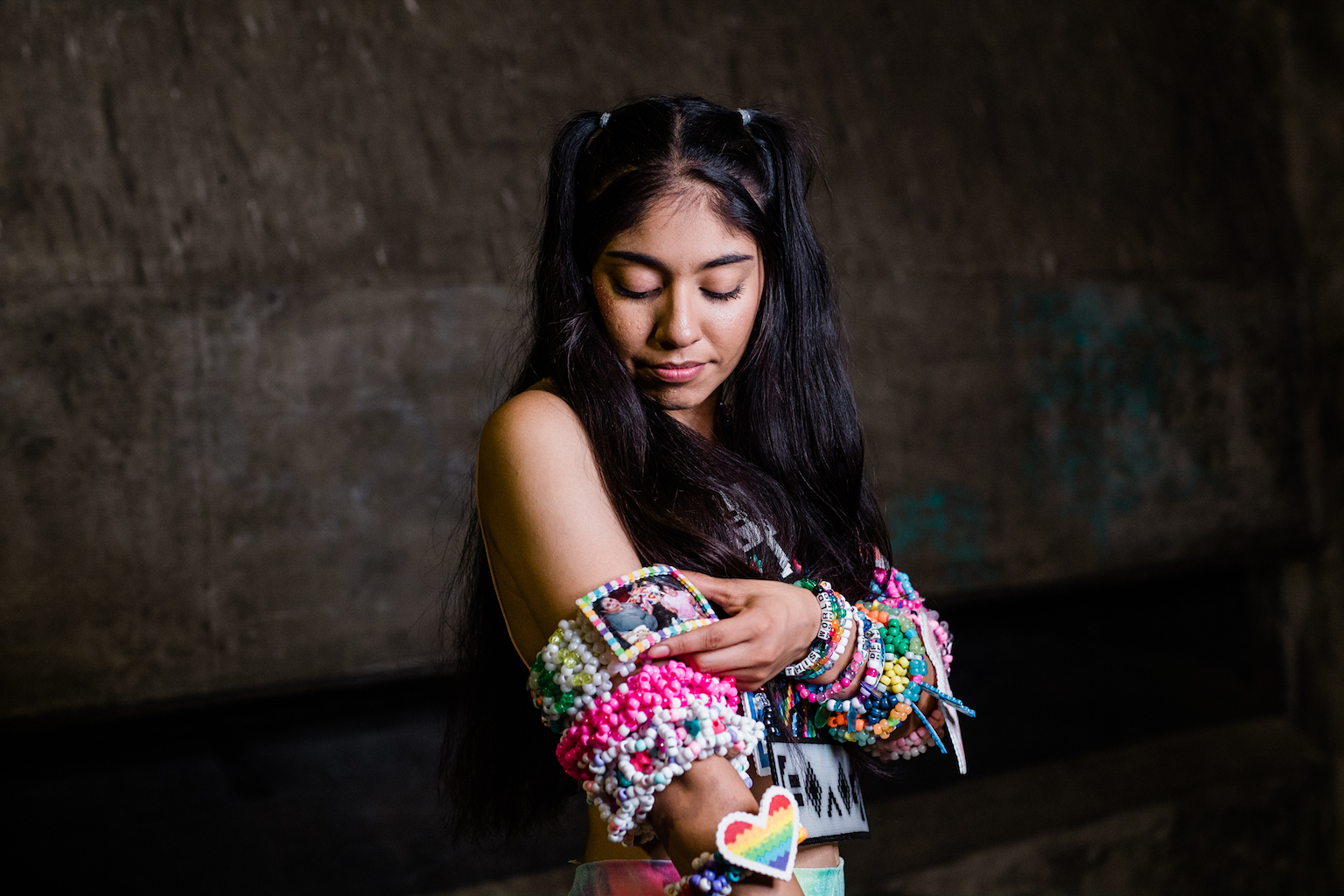
The Kandi scene, and the wider rave scene, helps many to cope with grief or trauma. For example, Lili keeps a picture of her late grandmother close to her whenever she raves, as a way to honor her memory.
Kandi was originally made and worn by dealers in the 1990’s. The idea was—because at raves your hands are usually in the air—the dealers’ bright bracelets could be seen easily so people could spot them and know where to buy drugs. Today, Kandi’s meaning has evolved.
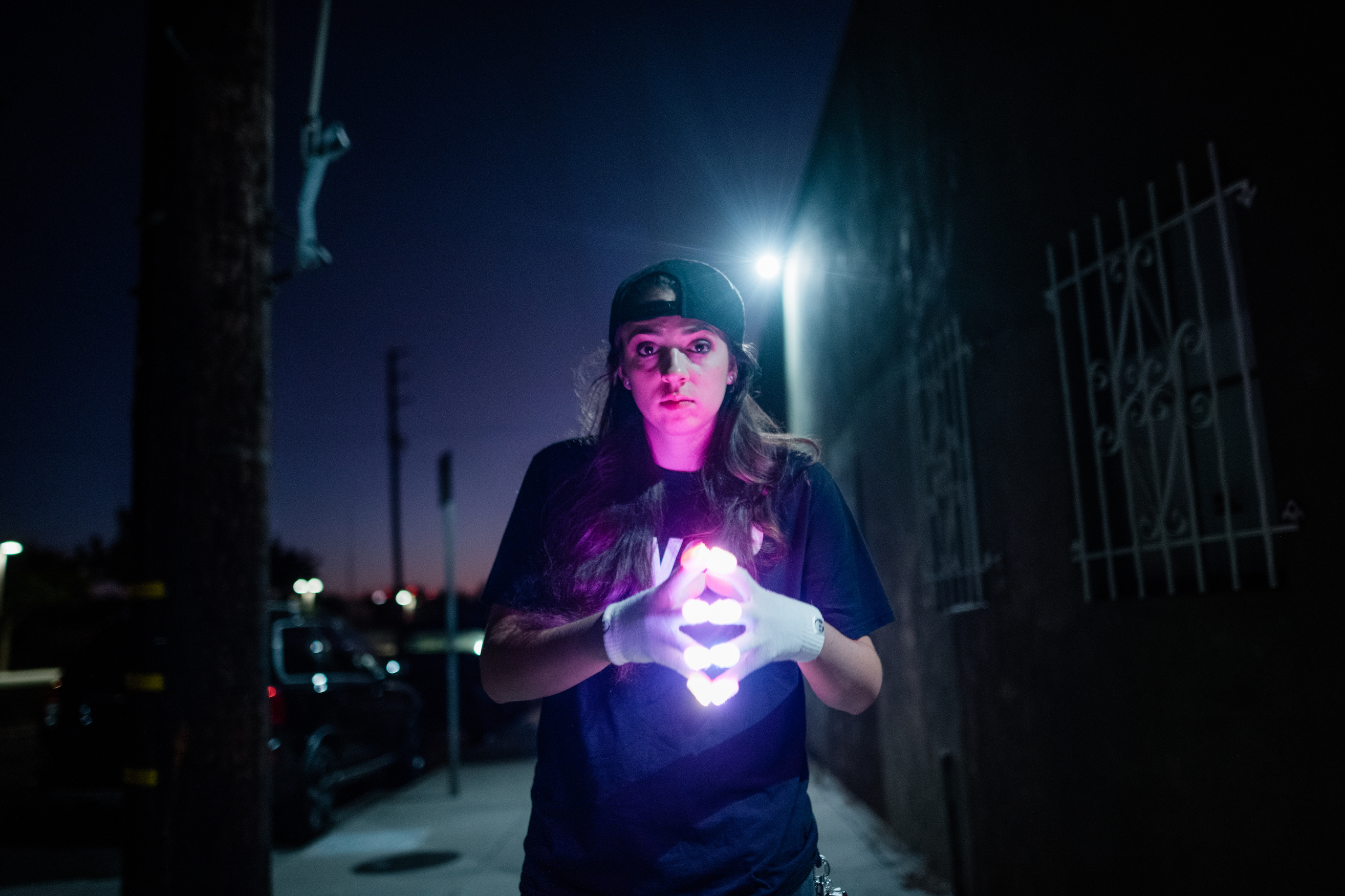
I spent the summer immersed in this colorful world, meeting people such as Lili, Alex, Mary, Jason, Jess and Mr. Calico, who have created their own space, beyond the naivete of childhood and in opposition to the adult world. An extraordinary community has evolved, representing the subversion of the ordered, restrained, chemically pure, and self-contained body.
With my pictures, I aim to capture the delirious experience of losing oneself to community hedonism, and the strong web of relationships which thrives underneath its bright exterior.
Catch Aline on Instagram
Scroll down to see more of Aline's photos
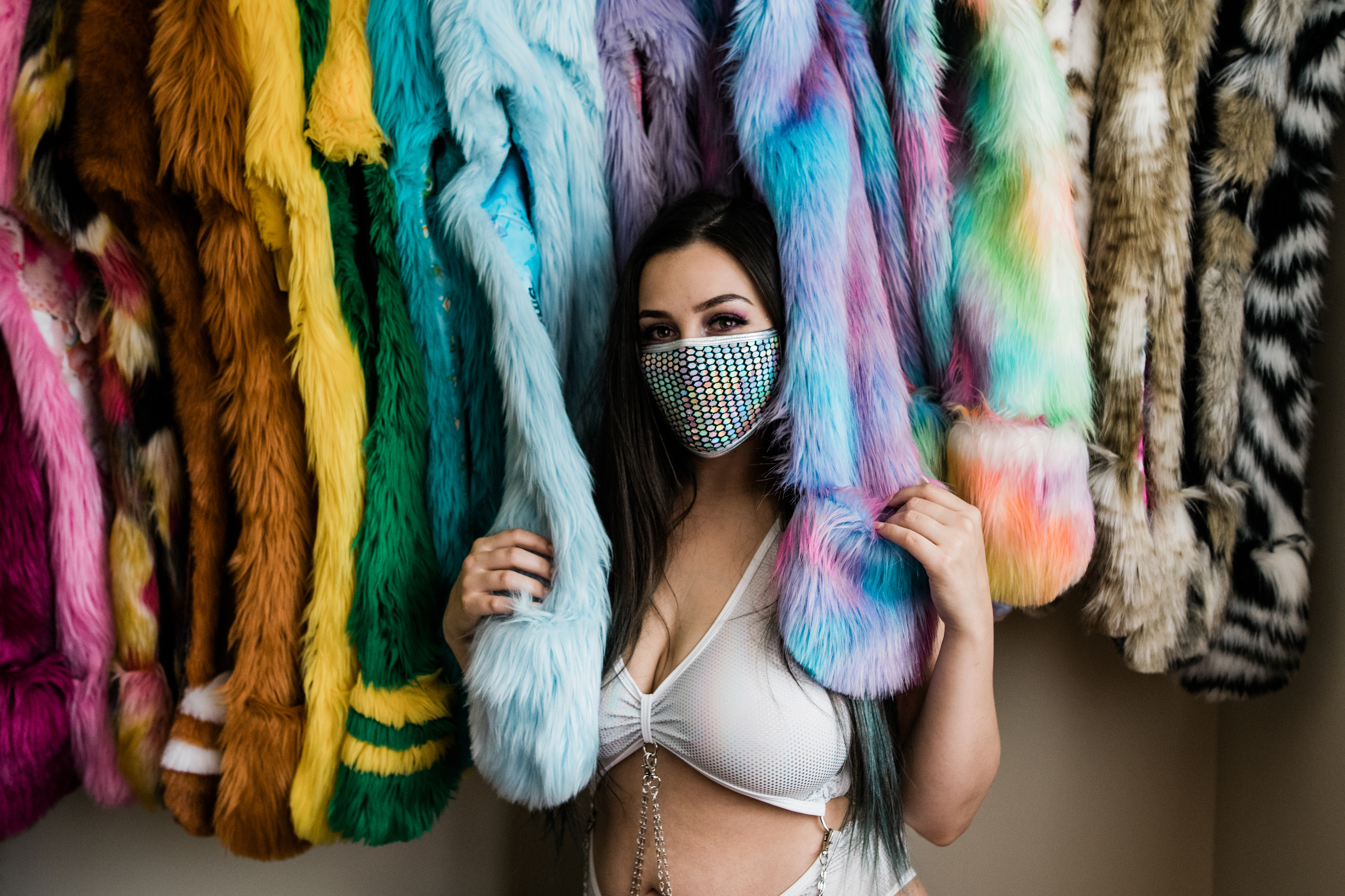
accessory
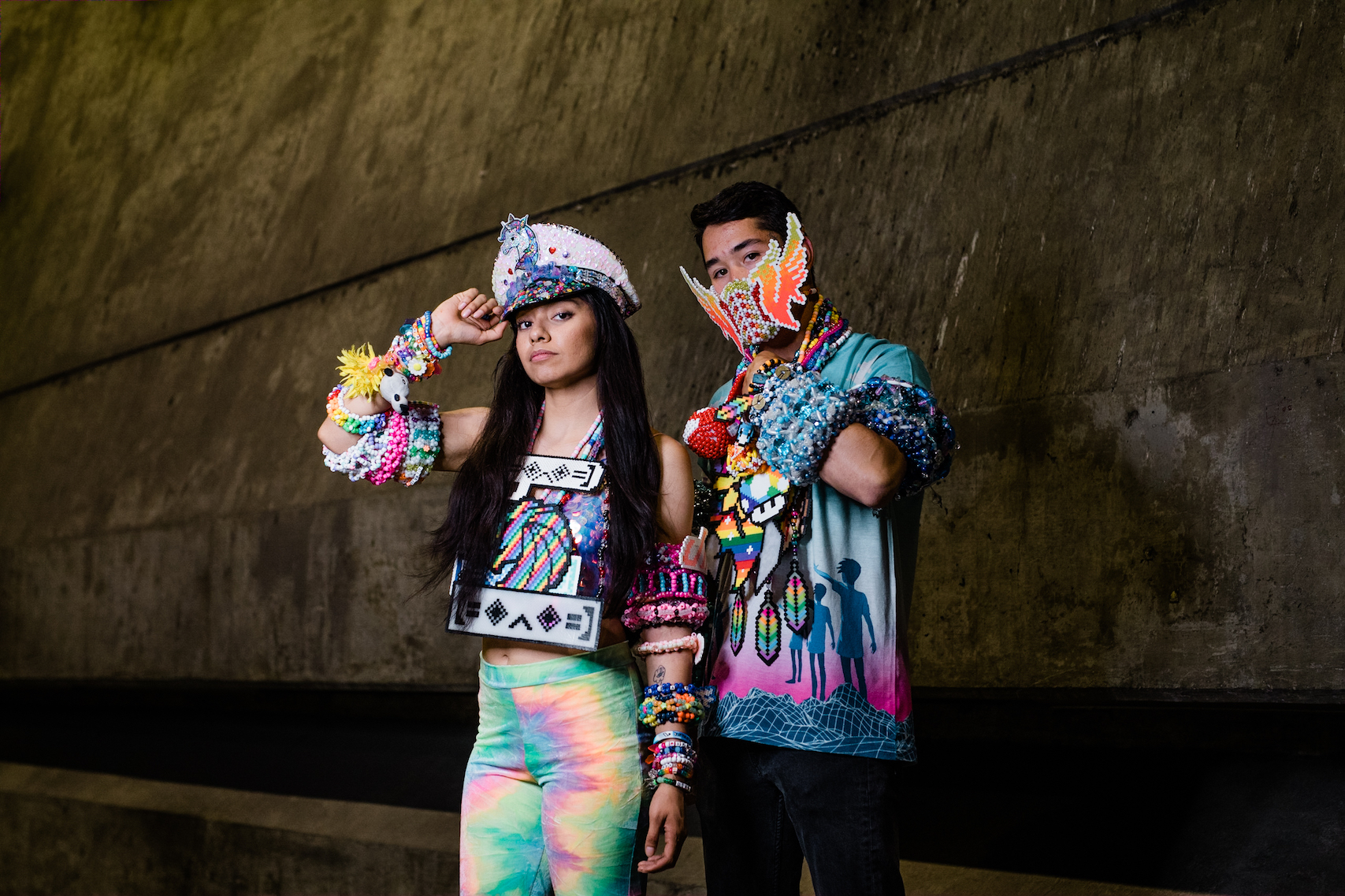
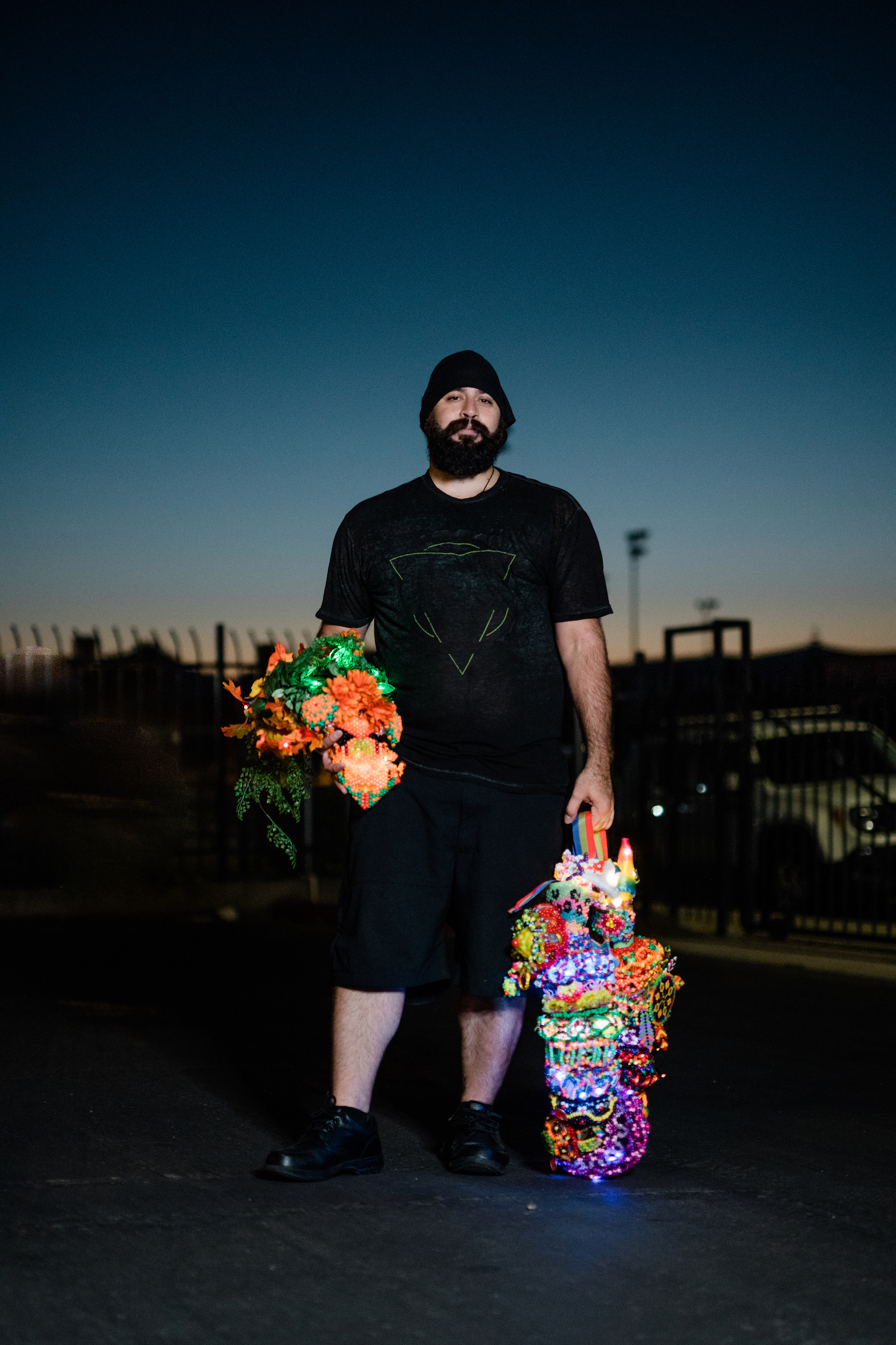
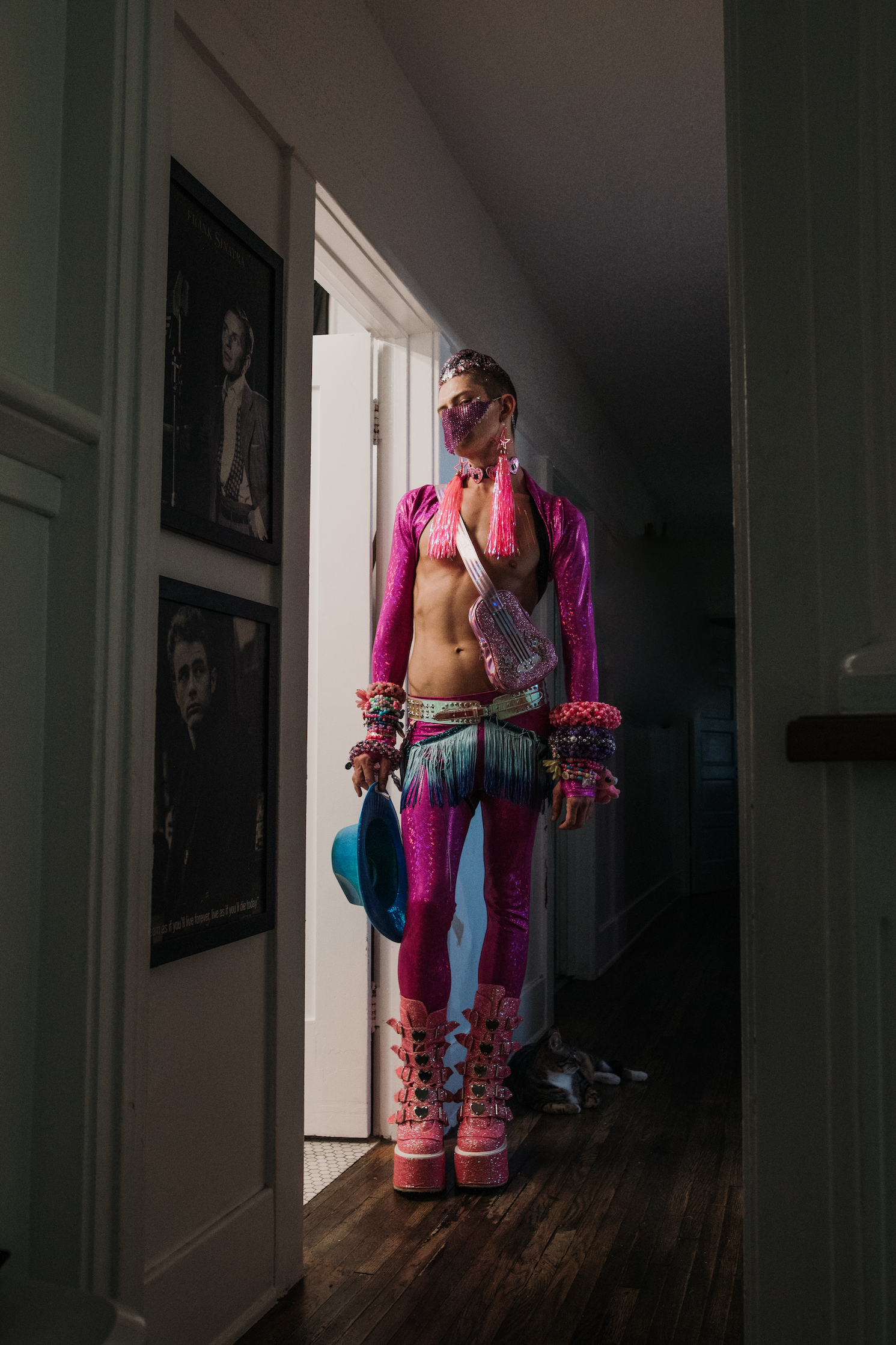
This article originally appeared on VICE US.